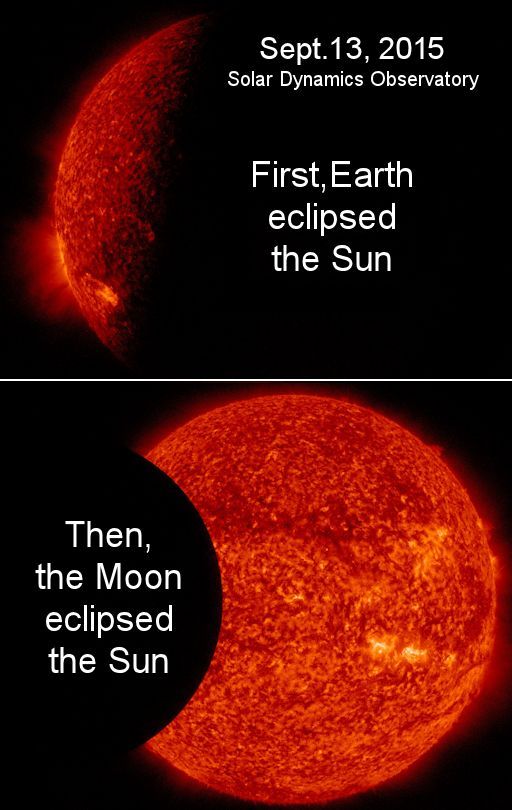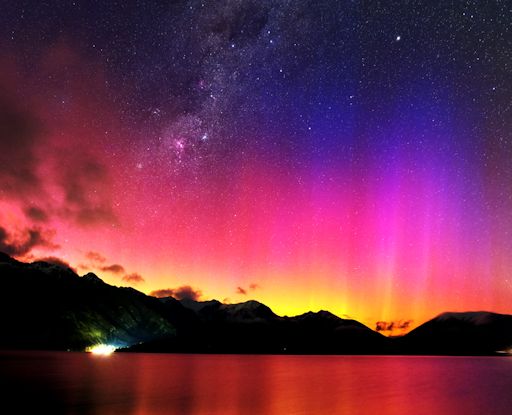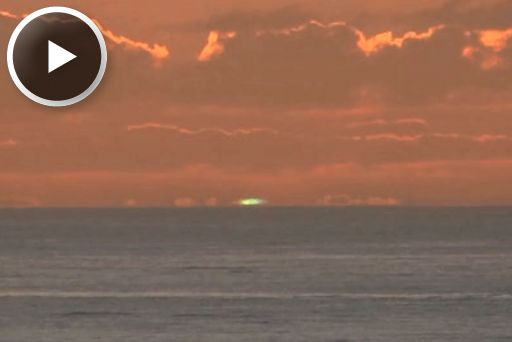Marianne's Heaven On Earth Aurora Chaser Tours Chasethelighttours.co.uk invites you to join them in their quest to find and photograph the Aurora Borealis. Experience the winter wonderland in the Tromsø Area. | | |
THE SUN IS STUBBORNLY QUIET: Despite the emergence of a new and unstable sunspot (AR2415), the sun remains stubbornly quiet. There hasn't been a strong flare in weeks, and the sun's X-ray output is very low. NOAA forecasters estimate a scant 10% chance of M-class solar flares on Sept. 14th. Solar flare alerts: text or voice
DOUBLE ECLIPSE OF THE SUN: On Sept. 13th, the sun was eclipsed--twice! No one on Earth has ever seen anything like it. Indeed, it was only visible from Earth orbit. NASA's Solar Dynamics Observatory (SDO) recorded the event:

The double eclipse began around 06:30 UT when Earth passed directly between the sun and SDO. The observatory watched as the body of our planet moved slowly across the face of the sun, producing a near black-out. When the Earth finally moved aside about an hour later, another eclipse was in progress. This time, the Moon was in the way. A movie from the SDO science team explains the crazy-perfect alignment required for such a view. Update: This picture shows the Moon and the Earth in front of the sun at the same time.
(In the snaphots above, note how the edge of the Earth looks so much fuzzier than the edge of the Moon. That's because our planet has a thick atmosphere and the Moon does not.)
Meanwhile on Earth, an ordinary partial eclipse was visible. People in South Africa and parts of Antarctica saw the Moon pass in front of the sun, off-center, producing crescent-shaped shadows and strange sunrises. Check the realtime photo gallery for their images.
Realtime Space Weather Photo Gallery
MORE AURORAS IN THE OFFING: So far, September has been a great month for auroras. A series of solar wind streams, mixed with one or two minor CMEs, has buffeted Earth's magnetic field almost non-stop for the past two weeks. The resulting G1- to G3-class geomagnetic storms have caused displays like this:

Minoru Yoneto took the picture on September 11th from Queenstown, New Zealand. "A big stream of solar wind gave us four lovely colors of Southern Lights," he says.
One reason for the recent spate of auroras is the coming change of seasons. For reasons that are not fully understood, auroras love equinoxes. At this time of year even gentle gusts of solar wind can spark a nice display of Northern or Southern Lights
A gust is on the way. NOAA forecasters expect a stream of high-speed solar wind to reach Earth on Sept. 14th-15th, sparking renewed displays of high-latitude auroras. Monitor the realtime photo gallery for updates. Aurora alerts: text or voice
Realtime Aurora Photo Gallery
EAST COAST GREEN FLASH: Last Monday, Sept. 7th, Spaceweather.com reader Don Koenigsberg woke up early to watch the sun rise from Atlantic City, NJ. He was vacationing on Labor Day. The holiday began with a flash of green:

"It was a great way to begin the day," says Koenigsberg. "I thought the video was interesting because green flashes can be difficult to see on the East Coast due to less than ideal atmospheric conditions."
Indeed, says atmospheric optics expert Les Cowley, "flashes from the west coast are MUCH more common. Mock-mirage green flashes - the type most frequently photographed - need temperature inversions. These inversions are readily generated along the west coast by the combination of cold offshore ocean current and warm air from inland. Almost daily green flashes have sometimes been seen from San Francisco!"
Green flashes on the east coast tend to be of a different type: "the classical Omega flash," says Cowley. "This occurs when there is warm air immediately over the ocean and the air temperature gradient changes rapidly with height. For the flash to be visible the warm air layers must be below you. An 'Omega flash' is what Koenigsberg witnessed."
Mock-mirage flashes, Omega flashes, east coast flashes, west coast flashes: they are all beauties. As Jules Verne wrote in his 1882 novel "Le Rayon Vert" (The Green Ray), they display "a green which no artist could ever obtain on his palette, a green of which neither the varied tints of vegetation nor the shades of the most limpid sea could ever produce the like!" More of this special green may be found in the realtime photo gallery:
Realtime Space Weather Photo Gallery
Realtime Sprite Photo Gallery
Realtime NLC Photo Gallery
Every night, a network of NASA all-sky cameras scans the skies above the United States for meteoritic fireballs. Automated software maintained by NASA's Meteoroid Environment Office calculates their orbits, velocity, penetration depth in Earth's atmosphere and many other characteristics. Daily results are presented here on Spaceweather.com.
On Sep. 14, 2015, the network reported 25 fireballs.
(24 sporadics, 1 September epsilon Perseid)

In this diagram of the inner solar system, all of the fireball orbits intersect at a single point--Earth. The orbits are color-coded by velocity, from slow (red) to fast (blue). [Larger image] [movies]
Potentially Hazardous Asteroids (
PHAs) are space rocks larger than approximately 100m that can come closer to Earth than 0.05 AU. None of the known PHAs is on a collision course with our planet, although astronomers are finding
new ones all the time.
On September 14, 2015 there were 1609 potentially hazardous asteroids.
Notes: LD means "Lunar Distance." 1 LD = 384,401 km, the distance between Earth and the Moon. 1 LD also equals 0.00256 AU. MAG is the visual magnitude of the asteroid on the date of closest approach. | | The official U.S. government space weather bureau |
| | The first place to look for information about sundogs, pillars, rainbows and related phenomena. |
| | Researchers call it a "Hubble for the sun." SDO is the most advanced solar observatory ever. |
| | 3D views of the sun from NASA's Solar and Terrestrial Relations Observatory |
| | Realtime and archival images of the Sun from SOHO. |
| | from the NOAA Space Environment Center |
| | the underlying science of space weather |
| | Web-based high school science course with free enrollment |

